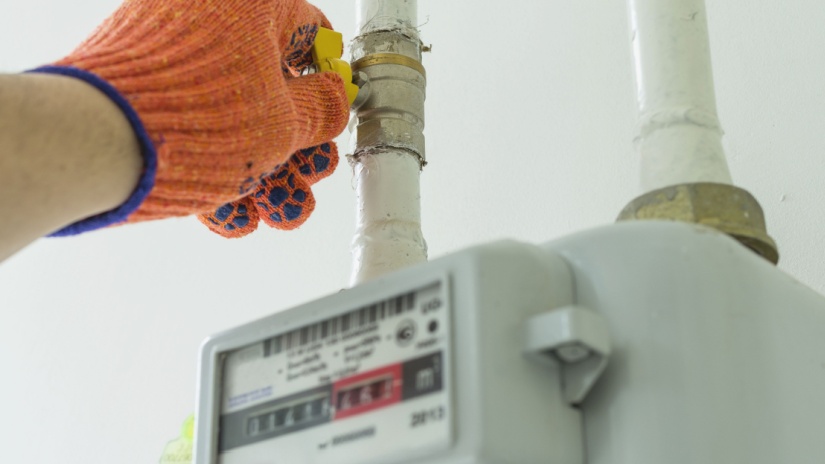Knowledge Centre
Everything you need to know about gas meters in Australia

Gas plays a critical role in many Australian homes, powering everything from heating systems to stovetops and hot water. While it’s easy to take the convenience of gas supply for granted, understanding how gas is measured and monitored is essential for keeping track of usage and ensuring efficient energy management.
At the heart of this system is the gas meter - a device that quietly does the important job of recording how much gas a household consumes.
Whether setting up a new connection, reading a meter, or making sense of a bill, a clear understanding of gas meters can make energy use easier to manage and more transparent.
What is a gas meter?
A gas meter is a measurement device installed at residential and commercial properties to record the volume of gas consumed. The reading from the meter allows an energy provider to calculate how much gas has been used during a billing period, based on volume measured in either cubic feet or cubic metres.
In Australia, gas meters are standard fixtures on properties connected to the natural gas network. These devices are generally installed by a gas distributor and must comply with regulatory safety and accuracy standards.
While meters themselves are not owned by the household, residents are responsible for ensuring the meter is accessible and undamaged.
Types of gas meters in Australia
Australian households typically have one of the following gas meter types:
Diaphragm gas meters
The most common type for residential use, diaphragm meters use internal chambers that expand and contract to measure gas flow. These meters are highly accurate for lower usage levels, making them suitable for homes and small businesses.
Rotary gas meters
Generally used in larger commercial settings, rotary meters use two rotating impellers to measure gas flow. These are not commonly found in residential properties.
Digital or smart gas meters
Some newer installations may include smart gas meters that provide digital readings and enable remote monitoring. These meters support accurate and frequent readings without requiring a technician to visit the site physically.
How to read a gas meter
Reading a gas meter is straightforward and knowing how to do it ensures that the readings on your gas bill match the actual usage.
Reading an analogue (dial) meter
Most dial meters have four or five small clock-like dials.
- Read the numbers from left to right.
- If a pointer is between two numbers, record the lower one.
- If the pointer is directly on a number, check the dial to the right—if it has passed zero, record the higher number.
Reading a metric (digital) meter
These meters display numbers in a digital format, similar to an odometer.
- Read the first five numbers from left to right.
- Ignore any digits in red or after the decimal point.
Imperial vs metric gas meters
In Australia, both imperial and metric gas meters are in use, although metric meters are now more common in residential settings.
- Imperial meters measure gas in cubic feet.
- Metric meters measure gas in cubic metres.
It’s important to know which type is installed at the property, as this affects how the usage is calculated and converted into energy units on a gas bill. Most gas providers convert the volume into megajoules (MJ), using a specific formula that accounts for gas pressure and energy content.
Where to find the gas meter at your home
The location of a gas meter can vary depending on the property layout, but common locations include:
- External walls near the front or side of the house
- Meter boxes set into the wall or attached to a brick pillar
- Near the driveway or fence line
- In apartment buildings, meters are often grouped in a communal service area
In all cases, the meter should be easily accessible for technicians and meter readers. It should also be kept clear of debris and not blocked by landscaping, rubbish bins, or vehicles.
Who reads a gas meter?
Gas meters are typically read by the gas distributor or a meter reading contractor appointed by the distributor. These readings are shared with the energy retailer, who then calculates and issues the bill to the customer.
In some cases, particularly in remote areas or during periods of restricted access, customers may be asked to provide a self-read. This involves reading the meter manually and submitting the figures via the retailer’s website or customer service line.
Understanding your gas bill
A typical Australian gas bill includes several pieces of information linked to the gas meter reading:
- Start and end dates for the billing period
- Opening and closing meter readings
- Volume of gas used, often shown in cubic metres or feet
- Conversion to megajoules (MJ) using a standard formula
Usage comparison against previous billing periods
Customers should check that the meter number listed on the bill matches the actual meter on the property, particularly after moving house or switching retailers. It’s also worth confirming that the reading method (actual or estimated) is accurately reflected.
Choosing the right Australian energy provider
While the gas meter stays the same regardless of which retailer is selected, the quality of service, customer support, and plan features can vary significantly between energy providers. When evaluating providers, Australians should consider:
- Customer service reliability
- Availability of digital tools for self-service
- Green energy or offset options
- Ease of communication and transparency
- Flexibility in billing and account management
A provider that aligns with household values and lifestyle needs—such as offering online self-reads or accommodating renters = can make energy management more convenient and less stressful.
Speak to an expert before making a decision
Choosing the right provider can be confusing, especially with differences in service and options across states and territories.
To better understand which gas and energy plans are available in your area, call Compare Energy on 1300 790 106. A specialist will walk you through the choices, helping match your household to the most suitable options.

